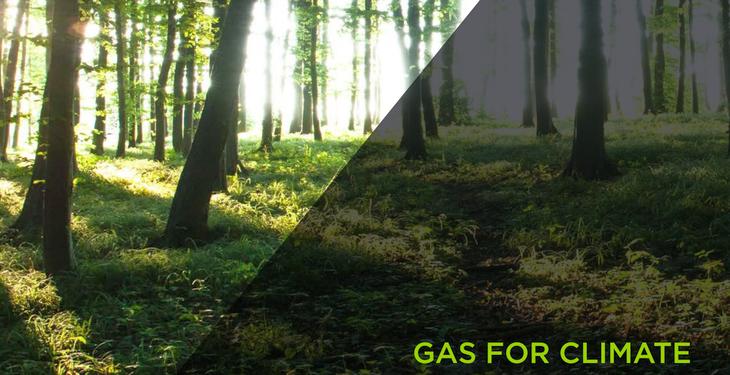A new study, launched by Navigant Consulting for Gas for Climate: A path to 2050, a group of seven European natural gas companies and two associations in the renewable gas industry, has been launched.
The aim of the study launched in March 2019 is to assess the optimal cost of complete decarbonization of the EU’s energy system by 2050 and to explore the role and value of renewable and low-carbon gas used in existing gas infrastructure. This is done by comparing two scenarios: “minimum gas” and “optimized gas”, according to CNR-CME.
This study is an updated version of the study published in 2018, with an extensive scope of analysis. Thus, the current study adds an analysis of EU energy demand in the industry and transport sectors. It also includes an updated supply and cost analysis for biomethane and green hydrogen, including renewable electricity production for hydrogen production and a power to methane analysis. In addition, it has stressed the potential role of blue hydrogen, natural gas combined with carbon capture and storage (CCS) or carbon capture and use (CCU).
Study’s main conclusions
- Full decarbonization of the energy system requires substantial quantities of renewable
electricity in both study scenarios. Electricity production will more than double and renewable
electricity production from wind and solar-PV will increase ten-fold compared to today. - Strong growth in wind and solar PV requires dispatchable electricity production by either solid
biomass or gas. Battery seasonal storage is unrealistic even at strongly reduced costs. - Full decarbonization of high temperature industrial heat requires gas in both scenarios.
- Existing gas grids ensure the reliability and flexibility of the energy system. They can be
used to transport and distribute renewable methane and hydrogen. - It is possible to sustainably scale-up renewable gas–biomethane, power to methane and green
hydrogen–at strongly reduced production costs. - Blue hydrogen produced from natural gas combined with CCS can be a scalable and cost-effective option. Because green hydrogen is still expensive today and because its ramp-up is
linked to the speed of growing wind and solar capacity to necessary levels, an early scale-up of
blue hydrogen can accelerate decarbonization. - The “optimized gas” scenario allocates 1,170 TWh renewable methane and 1,710 TWh hydrogen
to the buildings, industry, transport, and power sectors. This equals about 270 billion cubic meters
of natural gas (energy content). Compared to the “minimal gas” scenario, the use of gas through
gas infrastructure saves society €217 billion annually across the energy system by 2050 - The “minimal gas” scenario requires 809 TWh of (probably partly imported) solid biomass power,
nine times more than the 89 TWh in “optimized gas”. - The future energy system can become fully renewable, with blue hydrogen being replaced by
renewable green hydrogen towards 2050–2060 following a large scale-up of wind and solar.
